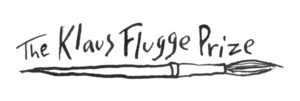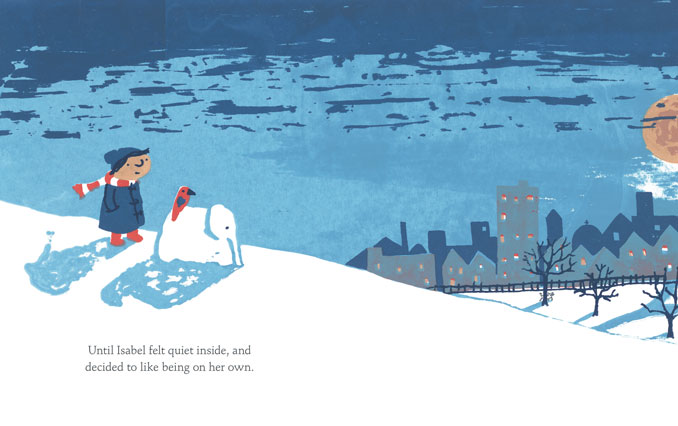
Daisy Hirst, illustrator of The Girl with the Parrot on her Head
Why did you want to become an illustrator?
I've always loved drawing and writing and making things, and I never grew out of picture books. As I grew up I chose to concentrate on writing and studied English and Creative writing for my BA – Illustration didn’t really occur to me as an option at that point and I didn’t feel like a Fine Art person. I was serious about poetry, until it became too serious and no fun and I couldn’t do it any more. At the same time I kept doodling and drawing birthday cards, and reading picture books, but didn’t think I could actually be an illustrator. When I found out about the Children’s Book Illustration MA at Anglia Ruskin, I was amazed they didn’t require you to have visual arts BA. I began to think that if some people were getting to make picture books, maybe one of them could be me. I seem to need to make things and children’s books are ideal because all the pigs and peas and jam sandwiches keep reminding me not to be too serious.
Where did the parrot come from? Does it have to mean anything?
The girl with the parrot on her head appeared in my sketchbook in 2010, along with some other people with birds on their heads. Most of my stories begin as sketchbook doodles – I draw all kinds of people, animals and monsters and some of them are more compelling to me, and keep coming back. I don’t think the parrot has to mean anything – certainly not one particular thing, and I think it can work as an unexplained oddment. It means things to me, and I’m happy that it seems to resonate for other people too.
Who has been your greatest influence?
As an illustrator, Quentin Blake. He is just wonderful and a genius – I can’t say anything very original about him but I’ve learnt so much from his work, and from what he’s written about it. Most of all to keep trying to draw loosely and energetically. Of illustrators I’ve loved since childhood, John Burningham has been another huge influence, and during my MA Kitty Crowther and Beatrice Alemagna also became very important to me. It feels to me as if different influences are stronger in each of the books I’ve made, but perhaps they won’t seem so different to other people.
Which comes first - the words or the picture?
Usually the characters, as sketchbook doodles, but I try to get them talking quite quickly as I draw and redraw them. ‘The girl with the parrot on her head does not need friends’ was the first bit of text for that book and the story grew from there, with words and pictures developing together. The cardboard box system was a doodle in another sketchbook, which seemed to belong to the same kind of world.
What scared you as a child?
Well certainly wolves. And by extension almost all dogs – even little yappy ones – which was perhaps unfair on dogs. But wolves in everything from Little Red Riding Hood to Laura Ingalls Wilder’s Little House books and Joan Aiken’s The Wolves of Willoughby Chase. Also monsters behind curtains, house fires, other people’s mothers, baked beans, marmalade.
What do you like best in illustrating a book?
Drawing the characters again and again to get their expressions and body language just right – I get to feel like I know them so well and there’s always a point towards the end of a book when I realise I’m going to miss them. I also love screenprinting because it’s tactile and unpredictable and very satisfying when it works.
What techniques do you use to create your illustrations?
I begin by making lots of tiny drawings in dip-pen and ink, or occasionally pencil. For picturebooks I then enlarge the line drawings and move things around until I’m happy with the composition – I used to do this with a photocopier and actual cutting-and-sticking but after The Girl with the Parrot on her Head I started using photoshop for the moving-bits-around stage. I use the line drawings as the basis for kitchen-table screenprints, which is a bit mad sometimes as I often end up making ten or more stencils for one illustration.
If you could choose, whose work would you like to illustrate?
So far I’ve only illustrated my own stories, but it would be really interesting to work on someone else’s text. Well, Russell Hoban would be amazing. And Michael Rosen, Joan Aiken, I loved The Yes by Sarah Bee… and there are some older stories I wonder about – a Scottish fairy tale called Molly Whuppie which was my favourite when I was little, and The Story of Horace by Alice M. Coates (although perhaps my bears are too friendly – but someone should do it).
The Girl with the Parrot on her Head is published by Walker Books, £6.99 paperback
Thanks to Klaus Flugge Prize judge Ferelith Hordon for posing the questions.

The Klaus Flugge Prize is funded personally by Klaus Flugge and run independently of Andersen Press.
Website maintenance & Copyright © 2024 Andersen Press. All Rights Reserved. Privacy & Cookie Policy.



